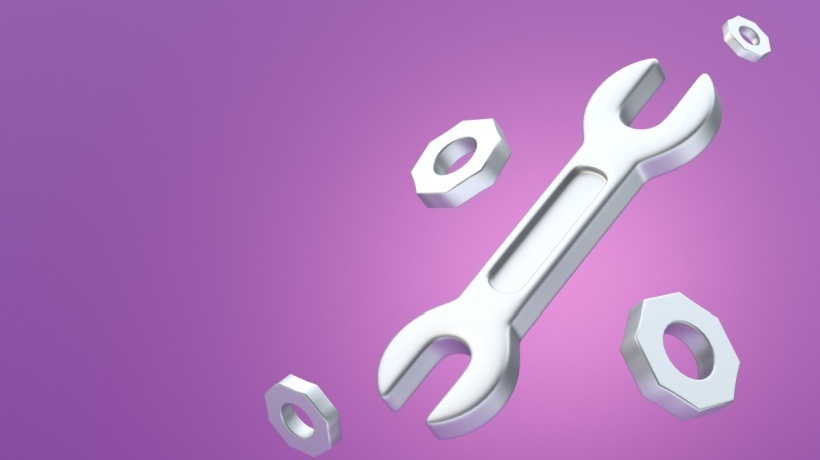Training Course Maintenance Strategy
Given the current economic volatility, many corporate L&D teams are focusing on maintaining their learning programs rather than creating new ones. It just makes sense. It can be more cost-effective to build on what already exists rather than start over, especially for programs that require routine content updates (like compliance training) or that can benefit from a redesign a few years after launch (like initiatives rapidly developed to address remote/hybrid delivery during the pandemic). However, viewing training course maintenance purely through a transactional lens may mean you're missing critical opportunities to not only update content but also proactively improve the program's performance and results at the same time.
Before diving deeper into 4 steps you can take to transform your maintenance strategy, let's break down a few key differences between occasional and proactive maintenance.
Occasional Vs. Proactive Course Maintenance
The conventional approach to course maintenance is limited. We may refresh when the content changes, but we aren't looking at the efficacy of the program. This reactionary approach with as-needed changes rarely impacts the quality of the learning experience.
On the other hand, L&D leaders who take a proactive approach to course maintenance may look ahead at the next 3, 6, or even 12 months to:
- Anticipate upcoming organizational changes
- Plan for both current and future gaps in performance
- Examine existing content and design with the intent to improve it
- Elevate and increase the efficacy of the overall program
Ideally, course maintenance should involve more than an occasional refresh. It's an opportunity to both eliminate and refresh outdated or irrelevant content while enhancing learner performance, developing new skills, and proactively preparing for change on the horizon. The process begins with an effective course maintenance strategy.
Step 1: Develop Or Refine Your Course Maintenance Strategy
Start by re-evaluating your current approach before making any changes to the course. Ask yourself the following questions:
- What's working about the course now?
- What isn't working? What needs to change?
- How motivated are learners to complete the course? To apply their skills and grow in their roles?
- What skill gaps do learners currently have?
- How does the content align with learners' needs? With organizational goals?
- How effective are the modalities within the experience?
- What measurement strategies are in place to gather and evaluate data?
- What resources exist to help support learners beyond the initial training?
Use your answers to develop or refine your course maintenance strategy. Consider conducting a needs analysis to further map out a learning path that addresses any concerns identified above while also making the most of the content you already have. Remember: you don't have to start over. It's about blending what's effective now with what needs to change in the future to improve performance and achieve goals.
"We frequently collaborate with our clients on maintenance initiatives, always keeping future updates and potential course expansions in mind when designing training solutions," explains Anna Sargsyan, Chief Learning Officer for AllenComm, a leading provider of L&D training and staffing programs. "In fact, when we can leverage data to enhance the design or learner experience, the process becomes just as rewarding as creating something new. Too often, course maintenance is viewed as a production task, but we approach it as a strategic opportunity to continuously improve and adapt the learning experience."
Step 2: Rely On Metrics For Guidance
If your organization already incorporates training measurement strategies, use the research and data you have to support your course maintenance strategy. For example, by looking at course completion rates, assessment data, or other information captured within the experience, you can learn more about learners' proficiency and confidence.
If you don't have this information readily available, don't worry—you're not alone. Many organizations actually struggle with measurement in their own programs. However, it's never too late to start. Even creating and distributing a simple survey to learners and stakeholders can provide valuable insight as you prepare for course maintenance.
You can also consider integrating new measurement options as part of your redesign or update process. For example, adding a pretest as a baseline assessment would enable you to compare learner performance before and after learning. Even if the data is primarily used to level-set practice and gauge improvement over the learning journey, it will be invaluable as a benchmark.
At AllenComm, one client added an upfront assessment to personalize the course experience for individuals. After the assessment, the course menu prioritized those lessons for which a specific learner needed practice and enabled that learner to bypass lessons where their knowledge was already strong. This type of adaptive learning can be a significant upgrade to an existing program.
Step 3: Focus On Improving The Learner Experience
Course maintenance provides a unique opportunity to make programs more engaging for learners by customizing their experience and incorporating active learning activities. These activities might include role-playing, decision-making scenarios, and simulations of real-life job tasks. Enhancements can be achieved through the inclusion of:
- Video and multimedia elements – The incorporation of motion, sound, and animation helps capture and hold learners' interests.
- Gamification – Affording opportunities for learners to compete with others not only injects an element of fun but heightens engagement.
- Blended learning – Combining online learning courses with in-person sessions provides valuable opportunities for participants to ask questions, share perspectives, and learn from others.
- Microlearning – Breaking up the content into smaller learning modules not only makes it easier to digest but also better accommodates busy work schedules.
- Social learning and peer mentoring – Leveraging workplace friendships and interactions can be a powerful reinforcement of content.
- eLearning – Advanced technology like Virtual and Augmented Reality can create immersive learning experiences. This may not be achievable in the short term, but it could be a long-term goal in revamping a training program.
Step 4: Assess Staffing Needs
Once you've developed a course maintenance strategy, referenced (or gathered) key metrics to support it, and revisited the learner experience to improve relevance and engagement, the last step is to consider your organization's capacity in bringing this vision to life.
This involves reviewing your current resources, such as staffing and budget, to see what's possible and where you may benefit from additional help. Course maintenance can sometimes be more easily outsourced than other types of projects, so you may not need a whole team to do it. Augmenting your team with one or two additional Instructional Designers can help ensure the project is in capable hands while also proactively avoiding delays by freeing up your core team's time to continue handling what matters most.
Build Regular Maintenance Into Your Corporate L&D Strategy
Rather than reacting to a particular situation that necessitates a course update, it's a smart strategy to proactively conduct regular assessments of your learning solutions to keep them effective, engaging, and in the moment.
In today's dynamic business environment especially, organizational goals can change overnight. This makes it all the more important to implement a course maintenance strategy that transforms challenges into L&D opportunities that directly contribute to enhanced learner performance and long-term organizational success.


